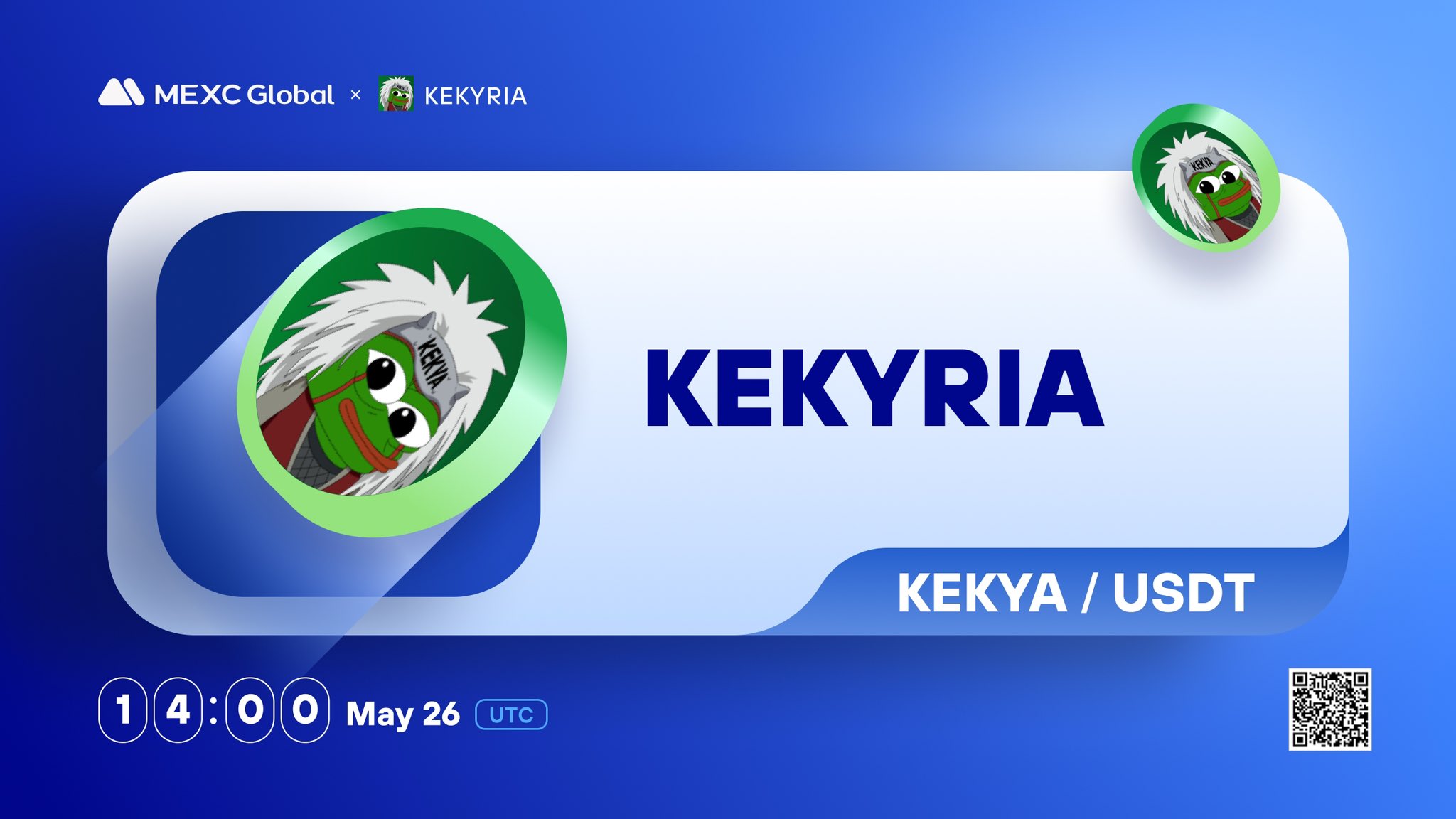
The blockchain industry faces a fundamental challenge: achieving true privacy without sacrificing transparency and composability. Enter ZAMA, the world’s first fully homomorphic encryption (FHE) unicorn that has raised over $150 million to solve this exact problem.
This comprehensive guide explores ZAMA’s groundbreaking confidential blockchain protocol, its innovative technology, real-world applications, and what makes it stand out in the competitive privacy-focused crypto landscape. Whether you’re a developer looking to build confidential applications or an investor interested in the future of encrypted blockchain technology, this article provides everything you need to understand ZAMA’s revolutionary approach to programmable privacy.
Key Takeaways
- ZAMA is the world’s first FHE unicorn with over $1 billion valuation and $150+ million in funding, pioneering fully homomorphic encryption for blockchain applications
- No token currently exists – The $ZAMA token is planned for launch at the end of 2025 with the mainnet, featuring a burn-and-mint economic model
- Revolutionary privacy technology – ZAMA’s FHEVM enables confidential smart contracts that operate on encrypted data while maintaining full composability with existing DeFi protocols
- Cross-chain compatibility – The protocol works as a confidentiality layer on top of any L1 or L2 blockchain without requiring modifications to the underlying chain
- Strong technical foundation – Uses TFHE encryption scheme with 13 MPC nodes, AWS Nitro Enclaves, and symbolic execution architecture for optimal security and performance
- Real-world applications ready – Enables confidential DeFi, private payments, sealed-bid auctions, identity verification, and enterprise healthcare/defense use cases
- Aggressive scaling roadmap – Plans to reach 10,000+ TPS using dedicated ASIC hardware, with Ethereum mainnet in Q4 2025 and Solana integration in 2026
- Competitive advantages over privacy rivals – Unlike TEE-based solutions (Secret Network) or ZK-only approaches (Aztec), ZAMA offers mathematical privacy guarantees without hardware trust assumptions
Table of Contents
What is ZAMA Crypto?
ZAMA is a pioneering open-source cryptography company that has developed the world’s most advanced Fully Homomorphic Encryption (FHE) solutions for blockchain and AI applications. At its core, ZAMA has created the Confidential Blockchain Protocol, a cross-chain infrastructure that enables confidential smart contracts on any Layer 1 or Layer 2 blockchain without requiring modifications to the underlying chain.
The company’s flagship technology, FHEVM (Fully Homomorphic Encryption Virtual Machine), allows developers to build smart contracts that operate on encrypted data while maintaining full composability with existing blockchain applications. This breakthrough enables end-to-end encryption of transaction inputs and state, ensuring that sensitive data remains private throughout the entire computational process.
ZAMA achieved unicorn status in June 2025 with a $57 million Series B funding round, bringing its total valuation to over $1 billion. The company was founded by Dr. Pascal Paillier, inventor of the widely-used Paillier encryption scheme, and Dr. Rand Hindi, former Citadel hedge fund manager turned deep tech entrepreneur.
The Story Behind ZAMA Protocol
ZAMA was founded in 2020 by two visionary cryptographers with complementary expertise. Dr. Pascal Paillier, the company’s CTO, is a pioneer in homomorphic encryption who invented the Paillier cryptosystem in 1999, which remains one of the most widely used additive homomorphic schemes today. Dr. Rand Hindi, the CEO, brought his background in finance and AI from his previous ventures, including founding Snips, a privacy-focused AI startup acquired by Sonos.
The founding vision was ambitious: make fully homomorphic encryption practical for real-world applications. For decades, FHE was considered the “holy grail” of cryptography – theoretically powerful but practically unusable due to performance limitations. The ZAMA team assembled the world’s largest research team in FHE, with over 90 employees including nearly half holding PhDs.
The company’s journey accelerated rapidly with strategic funding rounds. After initial development, ZAMA raised a $73 million Series A in March 2024, followed by the landmark $57 million Series B in June 2025 co-led by Blockchange Ventures and Pantera Capital. This funding trajectory reflects growing market recognition of FHE’s potential to transform not just blockchain, but cloud computing, healthcare, defense, and AI applications.

What Problems Does ZAMA Blockchain Solve?
1. The Blockchain Confidentiality Dilemma
Blockchain technology’s fundamental strength – transparency and public verifiability – simultaneously creates its greatest weakness for mainstream adoption. Every transaction, balance, and smart contract interaction is permanently visible to anyone, creating severe privacy and security risks that prevent institutions and individuals from fully embracing decentralized applications.
ZAMA identified four critical problems that its FHE technology directly addresses:
2. Information Exposure and Front-Running
Traditional blockchains expose all transaction data, enabling sophisticated actors to front-run trades, manipulate markets, and extract maximum value from users. This problem is particularly acute in DeFi, where profitable arbitrage opportunities are immediately visible to automated bots that can outbid regular users.
3. Institutional Adoption Barriers
Large financial institutions cannot use public blockchains for sensitive operations when their trading strategies, customer data, and financial positions would be immediately visible to competitors. This transparency requirement has forced many institutions to rely on private blockchains, sacrificing the benefits of decentralization and interoperability.
4. Smart Contract Limitations
Current blockchain architectures cannot support many real-world applications that require confidentiality, such as sealed-bid auctions, private voting systems, confidential credit scoring, or secure multi-party computations. These limitations severely restrict the types of applications that can be built on public blockchains.
5. Compliance and Regulatory Challenges
Financial institutions must comply with data protection regulations like GDPR while maintaining audit trails and regulatory compliance. Traditional blockchains’ all-or-nothing transparency makes it impossible to satisfy both privacy requirements and regulatory oversight simultaneously.

Key Features of ZAMA Homomorphic Encryption
1. Revolutionary FHE Technology
ZAMA’s protocol leverages the TFHE (Torus Fully Homomorphic Encryption) scheme, which enables unlimited exact computations on encrypted data. Unlike other cryptographic approaches that require approximations or limited operation depths, TFHE supports any arbitrary computation while maintaining perfect accuracy – essential for financial applications where approximation errors are unacceptable.
2. Cross-Chain Compatibility and Composability
The ZAMA Protocol operates as a confidentiality layer on top of existing blockchains rather than requiring a new chain. This approach enables developers to deploy confidential smart contracts on Ethereum, Polygon, Arbitrum, and other EVM-compatible chains while maintaining full composability with existing DeFi protocols and applications.
3. Symbolic Execution Architecture
ZAMA’s innovative symbolic execution model separates on-chain logic from heavy FHE computations. Smart contracts execute symbolically on the host chain using lightweight handles, while actual encrypted computations are performed asynchronously by specialized coprocessors. This architecture maintains low gas costs while enabling complex encrypted operations.
4. Developer-Friendly Integration
The FHEVM library extends Solidity with encrypted data types (euint8, euint64, ebool, eaddress) and operations (+, -, *, /, <, >, ==) that work identically to their plaintext counterparts. Developers can build confidential applications using familiar tools and programming patterns without cryptographic expertise.
5. Advanced Security Model
ZAMA employs multiple layers of security including threshold multi-party computation (MPC) for key management, AWS Nitro Enclaves for hardware-level protection, and publicly verifiable computations. The protocol uses 13 MPC nodes with a 2/3 majority requirement and robust protocols that guarantee output delivery even with malicious participants.
6. Programmable Privacy Controls
Unlike binary privacy solutions, ZAMA enables programmable confidentiality where smart contracts define exactly who can decrypt what data and under what conditions. This flexibility allows developers to implement sophisticated access control policies, compliance rules, and conditional data sharing mechanisms.

ZAMA Crypto Use Cases and Applications
1. Confidential DeFi Applications
ZAMA enables sophisticated DeFi protocols that protect user privacy while maintaining composability. Confidential DEXs can prevent front-running by keeping swap amounts encrypted until execution. Lending protocols can assess creditworthiness using encrypted personal data without exposing sensitive financial information. Automated market makers can operate with hidden reserves and private pricing mechanisms.
2. Private Token Systems and Payments
Financial institutions can issue confidential stablecoins where balances and transfer amounts remain encrypted throughout the transaction lifecycle. This enables compliant digital payments that satisfy both privacy requirements and regulatory oversight. Corporate treasuries can manage digital assets without revealing holdings to competitors or attackers.
3. Sealed-Bid Auctions and Token Launches
ZAMA enables truly fair price discovery through sealed-bid auctions where all bids remain encrypted until the auction concludes. Token launches can use this mechanism to prevent bot manipulation and ensure genuine price discovery. NFT auctions, carbon credit trading, and spectrum auctions can all benefit from this confidential bidding capability.
4. Identity and Compliance Systems
The protocol enables sophisticated identity verification systems where users can prove specific attributes (age, citizenship, accreditation status) without revealing underlying personal data. Financial institutions can perform KYC/AML checks using encrypted customer data, satisfying compliance requirements while protecting user privacy.
5. Network States and Governance
Decentralized autonomous organizations (DAOs) can implement confidential voting systems where vote weights and individual choices remain private while results are publicly verifiable. This prevents vote buying, coercion, and strategic voting behaviors that undermine democratic governance.
6. Healthcare and Enterprise Applications
Beyond blockchain, ZAMA’s technology enables secure data analysis in healthcare, where patient data can be analyzed without exposure. Defense applications can process classified information across multiple parties. Cloud computing providers can offer secure multi-tenant environments where customer data remains encrypted even during processing.

Tokenomics of ZAMA
Based on careful analysis of available documentation, ZAMA does not currently have a publicly released token. The project documentation and litepaper discuss a planned $ZAMA token with a detailed economic model, but the Token Generation Event (TGE) is not really scheduled for now.
Planned Token Economics
When launched, the $ZAMA token is designed to follow a burn and mint model where:
- 100% of protocol fees are burned, creating deflationary pressure
- New tokens are minted to reward network operators and stakers
- Total supply cap of 1 billion tokens with controlled inflation
Planned Fee Structure
The protocol will charge fees for three core services:
- ZKPoK verification: $0.016 to $0.0002 per bit (volume-based discounts)
- Ciphertext decryption: $0.0016 to $0.00002 per bit
- Cross-chain bridging: $0.016 to $0.0002 per bit
Fees are priced in USD but paid in $ZAMA tokens, with volume-based discounts ranging from 10% to 99% for heavy users.
Distribution Model
While specific allocation percentages aren’t detailed in available documents, the protocol plans to distribute tokens across:
- Network operators and validators
- Community incentives and ecosystem development
- Team and early contributors
- Protocol treasury for ongoing development
Functions of the $ZAMA Token
1. Network Security and Staking
The $ZAMA token will serve as the primary mechanism for securing the network through staking. Validators must stake significant amounts of $ZAMA to operate coprocessors and Key Management Service (KMS) nodes. The protocol uses a Delegated Proof-of-Stake model with 16 operators initially: 13 KMS nodes and 3 FHE coprocessors, expanding over time.
2. Protocol Fee Payments
All protocol interactions require $ZAMA token payments, including encrypted input verification, decryption requests, and cross-chain bridging. This creates consistent token demand proportional to network usage, with fees automatically burned to reduce supply.
3. Governance Participation
Token holders will participate in protocol governance through on-chain voting for critical decisions including:
- Inflation rate adjustments for staking rewards
- Slashing proposals for misbehaving operators
- Protocol upgrade approvals
- Fee structure modifications
4. Operator Incentive Alignment
The token creates economic incentives for honest behavior among network operators. Coprocessors and KMS nodes earn staking rewards proportional to their stake and performance, while facing slashing penalties for malicious activity or extended downtime.
5. Premium Feature Access
Heavy protocol users can stake $ZAMA tokens to access volume-based fee discounts, reducing per-operation costs by up to 99% for the largest users. This creates additional token utility beyond basic protocol operations.

ZAMA Protocol Roadmap and Future
ZAMA’s roadmap positions the protocol as foundational infrastructure for the next generation of privacy-preserving applications across blockchain and traditional computing.
Near-Term Milestones (2025-2026)
The Ethereum mainnet launch is scheduled for Q4 2025, initially supporting approved applications before transitioning to permissionless deployment. The Token Generation Event will occur at year-end 2025, followed by multi-chain expansion to additional EVM-compatible chains. Solana integration is planned for 2026, extending confidential computing capabilities to high-throughput environments.
Technical Scaling Improvements
ZAMA is pursuing aggressive performance optimizations to achieve enterprise-scale throughput. Current benchmarks show 20+ transactions per second, with plans to reach 100+ TPS using GPU acceleration, 500-1000 TPS with FPGA implementation, and ultimately 10,000+ TPS using dedicated ASIC hardware. These improvements will enable real-world applications like retail payments and high-frequency trading.
Advanced Cryptographic Features
Future protocol upgrades will introduce ZK-FHE integration for verifiable encrypted computations, larger MPC committees for enhanced decentralization, and post-quantum signatures for comprehensive quantum resistance. The protocol will also implement permissionless operator participation through ZK-proof-based validation.
Ecosystem Expansion
ZAMA plans to expand beyond blockchain applications into healthcare data analysis, defense and government systems, cloud computing infrastructure, and AI training on encrypted datasets. The company’s dual licensing model (open source for research, commercial licenses for production) positions it to capture value across multiple high-growth markets.
Mainstream Adoption Strategy
The protocol’s evolution toward user-friendly abstractions, mobile SDK integration, and enterprise compliance features aims to make confidential computing as accessible as traditional cloud services. Integration with major cloud providers and enterprise software vendors will drive mainstream adoption.

ZAMA vs Competitors: Blockchain Privacy Comparison
ZAMA operates in the competitive confidential computing and privacy blockchain space, where several projects pursue different technical approaches to achieve similar privacy goals.
Primary Competitors and Technical Approaches
Secret Network (SCRT) uses Trusted Execution Environments (TEEs) and Intel SGX for confidential smart contracts, but faces inherent hardware trust assumptions and vulnerability to side-channel attacks.
Oasis Network (ROSE) combines TEEs with a unique ParaTime architecture for confidential computing, offering good performance but similar trust limitations.
Aztec Protocol focuses specifically on Ethereum privacy using zero-knowledge proofs, providing strong privacy but limited to specific use cases and requiring complex circuits.
ZAMA’s Competitive Advantages
ZAMA’s fully homomorphic encryption approach provides unique benefits over competitors. Unlike TEE-based solutions, FHE offers mathematical privacy guarantees without requiring trust in hardware manufacturers or vulnerability to physical attacks. Compared to zero-knowledge solutions, ZAMA enables unlimited computation depth and exact arithmetic without approximation errors or circuit complexity limitations.
The cross-chain architecture distinguishes ZAMA from blockchain-specific privacy solutions. While competitors typically operate as standalone chains or require bridging mechanisms, ZAMA’s protocol integrates directly with existing infrastructure, enabling immediate composability with established DeFi ecosystems and applications.
Technical Superiority and Market Position
ZAMA’s $1 billion unicorn valuation and world-class research team (largest in FHE globally) provide significant competitive moats. The company’s 100x performance improvements over five years of development, combined with planned hardware acceleration, position it to achieve practical scalability that competitors cannot match with their current architectures.
The programmable privacy model offers unprecedented flexibility compared to binary privacy solutions. While competitors typically provide all-or-nothing confidentiality, ZAMA enables smart contracts to define granular access controls, compliance rules, and conditional data sharing – essential for enterprise adoption.
Market Validation and Adoption
ZAMA’s series of successful funding rounds from top-tier blockchain investors, including Pantera Capital and Protocol Labs, demonstrates strong market confidence in the FHE approach. The company’s partnerships with traditional enterprises and commercial licensing to dozens of companies across blockchain and AI indicate real-world demand for its specific technical approach.
However, competitors maintain advantages in current market adoption and immediate availability. Projects like Secret Network have active mainnet operations and established ecosystems, while ZAMA’s mainnet launch is still pending in Q4 2025.
Conclusion
ZAMA represents a paradigm shift in blockchain privacy, transforming fully homomorphic encryption from theoretical cryptography into practical infrastructure for confidential applications. With over $150 million in funding, unicorn status, and the world’s largest FHE research team, the company is uniquely positioned to solve the blockchain confidentiality dilemma that has limited mainstream adoption.
The protocol’s cross-chain architecture, developer-friendly tools, and programmable privacy model address real market needs for institutional adoption while maintaining the composability and decentralization that make public blockchains valuable. As regulatory pressure increases and privacy concerns grow, ZAMA’s technology becomes increasingly essential for the next generation of blockchain applications.
While the $ZAMA token launch remains pending until late 2025, the protocol’s technical foundation and market opportunity position it as a potentially transformative investment in the future of confidential computing. For developers, enterprises, and investors seeking exposure to cutting-edge privacy technology, ZAMA offers a compelling combination of technical innovation, market timing, and execution capability.
Join MEXC and Get up to $10,000 Bonus!
Sign Up


